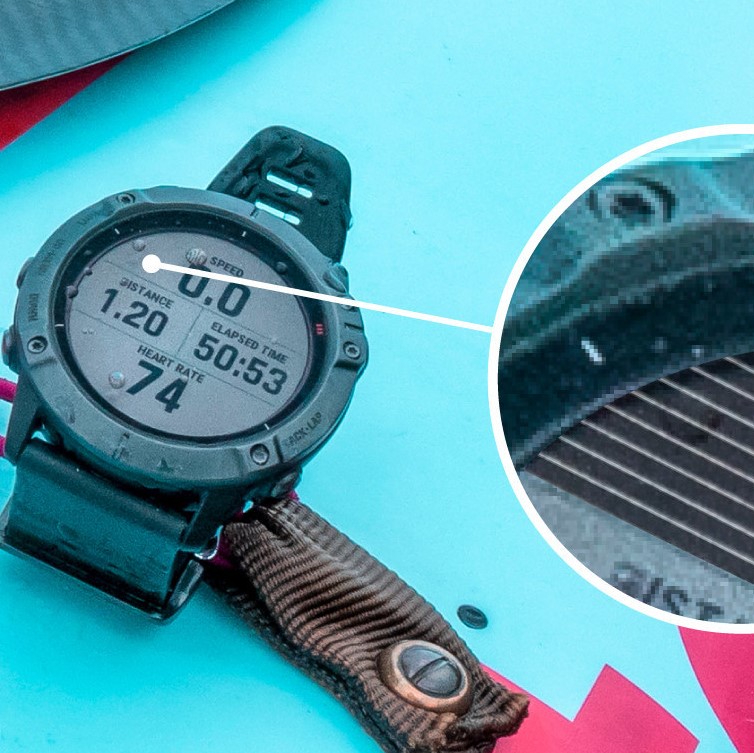Featured
CES 2021: Next small thing – IoT harvests the Sun
Among the more understated technologies showcased at CES this week, the advent of small footprints for “energy harvesting” stood out, writes ARTHUR GOLDSTUCK.
Share
- Click to share on Twitter (Opens in new window)
- Click to share on Facebook (Opens in new window)
- Click to share on LinkedIn (Opens in new window)
- Click to email a link to a friend (Opens in new window)
- Click to share on Reddit (Opens in new window)
- Click to share on WhatsApp (Opens in new window)
- Click to share on Pinterest (Opens in new window)
Creators of space-constrained designs can now significantly increase running time with new “solar harvester” solutions in products like wearables and emerging internet of things (IoT) applications, thanks to a number of innovations showcased at CES 2021.
Silicon Valley-based Maxim Integrated Products showcased the MAX20361 single-/multi-cell solar harvester, which uses a technique called maximum power point tracking (MPPT). Maxim claims it is the industry’s smallest solar harvesting solution.
At the same time, French Internet of Things (IoT) specialist Sequans Communications and Belgian energy harvesting company e-peas demonstrated a joint solution to provide a self-powered cellular IoT connectivity solution in a very small footprint. The most startling feature of the product? It can operate indefinitely without batteries.
Sequans is a leader in 4G and 5G chips and modules for broadband and IoT applications, while e-peas supplies advanced energy harvesting and processing semiconductor solutions. The combined project uses e-peas’ AEM energy harvesting integrated circuit) and Sequans’ Monarch LTE-M/Narrowband-IoT platform.
“Energy harvesting technology is ushering in a new era where IoT devices will no longer have to run on batteries,” says Didier Dutronc, head of Sequans’ massive IoT business unit. “This will have a profound impact on the IoT market and will greatly increase the number and types of applications that can be connected to the IoT, extending it to those applications where direct power connection or manual intervention to change batteries is not possible.”
The Maxim product appears more mature. It is claimed to be the industry’s smallest solar harvesting solution “due to reduced component size and smaller, fewer external components” – giving it a 50 percent smaller solution size compared to its closest competitor, according to Maxim.
However, efficiency benefits appear to be only incremental. It is claimed to boost efficiency of energy harvested by up to 5% compared to the closest competitor, while additional gains can be achieved through adaptive features.
“This device offers exciting possibilities for a new supplemental power source to continually charge the battery of a device,” says Frank Dowling, director of the industrial and healthcare business unit at Maxim. “For example, if you can harvest just 30mW of solar power per day on a 300mAHr battery system, which typically runs for three weeks, you can as a result extend that runtime by over 50%.”
The Sequans/e-peas demonstration showed the AEM10941 IC transferring energy from a photovoltaic harvester to a storage element and then to the Monarch LTE-M/NB-IoT module, where it powered a sensor device measuring power, light, and humidity.
According to the two companies, the demo kit was supplied with a small indoor DSC photovoltaic cell that can power many types of IoT applications using indoor light and LTE connectivity.
“In an outdoor environment, the size of the photovoltaic cell can be reduced to allow for energy-autonomous devices in an even smaller form factor. In a typical application, such as in farming or industry, device sensors collect data (humidity, temperature, air quality) while the lighting environment is loading the capacitor. With the combination of the e-peas AEM10941 IC and Sequans’ Monarch module, the collected data can be sent up to 8 times a day, with no need of batteries, using a 15 cm2 indoor PV cell under 500 Lux, making the devices completely energy self-sufficient and CO2 neutral.”
The single biggest advantage of the Maxim option is that it is available commercially, at https://www.maximintegrated.com.
James Harvard, principal analyst at IDTechEx Research, sees the technology offering massive benefit in the wearbles arena: “Innovation continues to drive adoption of consumer wearables with global revenue estimated to grow at a compound annual growth rate (CAGR) of 15% in the next four years. For device manufacturers, longer battery life and smaller form factor remain key product features toward market differentiation and user satisfaction.”
Christian Ferrier, chief marketing officer of e-peas, says: “Not only do we show the viability of energy harvesting technology, but we show how IoT companies can build maintenance-free devices that can operate autonomously, which has a huge positive impact on sustainability, total cost of ownership, and device longevity.”
Share
- Click to share on Twitter (Opens in new window)
- Click to share on Facebook (Opens in new window)
- Click to share on LinkedIn (Opens in new window)
- Click to email a link to a friend (Opens in new window)
- Click to share on Reddit (Opens in new window)
- Click to share on WhatsApp (Opens in new window)
- Click to share on Pinterest (Opens in new window)
| Thank you for Signing Up |

















